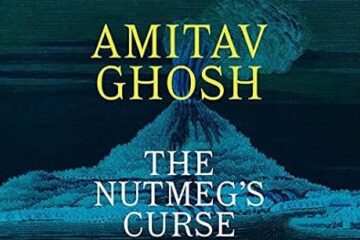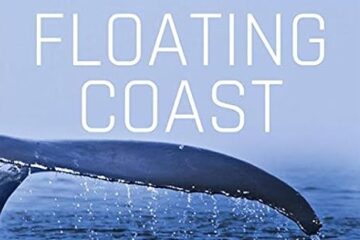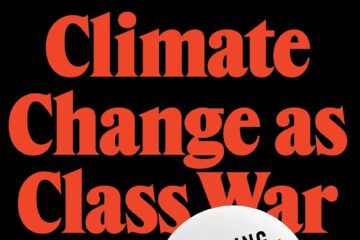Leah VanSyckel | Book Review of Stephen J. Pyne’s The Pyrocene: How We Created an Age of Fire, and What Happens Next
University of California Press, 2021
The burden of interpreting climate change and crafting a narrative from environmental imagination—a burden of interpretation that is inextricably linked to ecological stewardship action—falls heavily on language arts creators, communicators, and instructors in both weight and frequency. It can feel immense: the technical knowledge necessary to approach the subject is often dense or inaccessible; moreover, profit-driven media wields woe on 24-hour news cycles claiming unprecedented, unfathomable, uninterpretable chaos.
Nevertheless, Stephen Pyne’s book The Pyrocene: How We Created an Age of Fire, and What Happens Next offers to help lighten the load of climate change meaning-making with accurate, concrete information, conveyed through a pragmatic paradigm. Although an environmental history text from a giant in the field, Pyrocene is fundamentally a “search for a usable future.” Pyne excavates the past for a future-action outlook, which immediately benefits creators and facilitators attempting to educate and reenchant imaginations.
Classrooms and stories require authoritative voices to make sense of wildfire-caused destruction, a “poster child” of negative climate change, and the dissension over human culpability in their fires. Pyne speaks to this misinformation: “Among planets, fire is as rare as life, and for the same reason: fire on Earth is a creation of the living world.” This quote illustrates Pyne’s intellectual romance with his subject, but also how he reorients individual perception of fire to the planetary scale. He also reorients understanding by clarifying the nature of fire. It is a process, one of combustion, a significant conception for the efficacy of his work.
The text is an argument to “rename and redefine the Anthropocene according to humanity’s primary ecological signature, which is our ability to manipulate fire,” which it accomplishes by first deconstructing modern fire language. In our cold modernity, we struggle to name fire. For example, Pyne rightly points out that we forget that stovetops rely on combustion for heat, even electric ones without visible flame. What we do name, we often otherize; nonetheless, engines burn fossil fuels as much as poorly maintained land may burn. Pyne attempts to dismantle this coldness by intimately knowing and naming fire, giving future weavers a new lexicon to wonder rather than fear.
This lexicon of pragmatic hope begins with “first fire,” which Pyne identifies as the deep time geological narrative of fire as an ecological, biochemical process mutual with life. A theory of “how life started” says that organic compounds were struck by lightning to form the first cells, themselves transformed into respirating entities, a form of combustion. Other theories vary, but all involve fire, even if in forms we have forgotten how to name.
Afterwards, he describes “second fire,” or the rhythmic and cyclical species-long relationship between humans and landscapes — coevolving with flame. Pyne takes the reader through geological chronology, fossil fuel deposit records, surveys of human cultures’ relationships to fires, and fire science research. Second fire includes a third chapter on living landscapes, which display a range of fire sensitivities, needs, and histories of mutualism with burning. In these landscapes, “living burning” takes place, which are those same fire events that have abetted life since the dawn of time, especially in their ferocity.
It is here, after the implicit deconstruction of Western fire interpretations, that Pyne discusses “lithic landscapes,” or those inextricably shaped by fossil fuel extraction and combustion, which is the disordered “third fire” of Western industrialism that swept modernity. Pyne shows that when lithic burning takes over, living burning gets suppressed. The imbalance between the types of fires results in the massive conflagrations at their boundaries that are inhospitable to not just “business as usual” but human life. Pyne argues that only by reducing third fire and increasing wise second fire can we live peaceably with our natural coefficient: flame.
He writes in his fifth chapter, “we already know what we need to do.” He concludes by showing how his paradigm can simplify by adjusting attitude and approach to climate change. First, attitudinally: not all fire is bad fire. There is positive climate change and healthy living burning is part of that, which means responding humbly to the changing character — and thus needs — of an individual place, looking at the earth with awe and not fear. In terms of approach: reduce third fire. Some reduction may come from better land management, like controlled burns to reduce brush in fire sensitive areas. It also comes from reducing civilization’s dependencies on lithic burning. Conscientiously burning or altogether avoiding fossil fuels and avoiding ecologically inhospitable industrial processes reduce lithic burning.
Pyne’s steps may feel weak, and students may even express incredulity at the lack of details. However, the book is primarily meant as a history text rather than a prescriptive text, excelling at opening perspectives rather than providing praxis. A few frustrating points may be with his nonspecific address of places already trying and attempting these new policies and attitudes. He also, despite his anti-colonial lexicon, inadequately acknowledges a few factors, one of which is those most likely negatively affected by wildfire are least responsible for the worst lithic burning events, especially in the Global South. His response bears the patience of his love for fire, which is belief that consistent adjustment will restore cycles eventually, if not in our age.
Pyne’s recapitulation of fire is cleverly synthesized. This paradigm shift demonstrates Pyne’s awareness and excellence within his field, making it relevant to discipline-specific and national discourse across the liberal arts. However, this may not be the best first book to pick up on the subject of fire, geological age definition, or by the author, who has 40 prior titles to his name. Pyne’s contemplative ecopoetics and conviction land, at times, as hedging or disorganized. This detracts from the sharpest images of the argument’s narrative. Pyne’s ability to include these components and genre-bend arises from his immense general knowledge and expertise within his field; however, the necessity of glossing reduces the presentation as a tightly developed and well-positioned theory in the overall contention for defining how humans arrived at this time in climate.
Like authors proposing and defending Capitalocene and Anthropocene, Pyne correctly attributes geophysical agency to humanity. The defining quality of Pyne’s argument differs from those by focusing on humanity’s fire habits as a product of fossil fuels. For the creative writer, climate communicator, the lecturer, and the general reader, conviction of paradigm may not matter as much as exposure and representation. However, if this text is being looked to as a definitive solution, more reading will be required for that determination.
I recommend this book to anyone attempting to represent and interrogate wildfires in public facing messaging, whether creative or technical. It provides reassuring language and paradigms on fire that clear the cobwebs of fear surrounding fire’s underlying chemical reaction. Most helpfully, it shows straightforward ways that history can be healthily repeated and represented to write new stories.
Stephen J. Pyne is an emeritus professor at Arizona State University. He has published 35 books, most of them dealing with fire, but others on Antarctica, the Grand Canyon, the Voyager mission, and with his oldest daughter, an inquiry into the Pleistocene. His fire histories include surveys of America, Australia, Canada, Europe (including Russia), and the Earth. The Ice: A Journey to Antarctica was named by the New York Times to its 10 best books for 1987. Fire in America: A Cultural History of Wildland and Rural Fire won the Forest History Society’s best book award. He has twice been awarded NEH Fellowships, twice been a fellow at the National Humanities Center, enjoyed a summer Fulbright Fellowship to Sweden, and has received a MacArthur Fellowship (1988-1993). In 1995 he received the Robert Kirsch Award from the Los Angeles Times for body-of-work contribution to American letters. He now lives on an urban farm in Queen Creek, Arizona where he raises Tunis sheep, chickens, and citrus.
Leah VanSyckel is the co-managing editor of Flyway: Journal of Writing & Environment and a candidate in the MFA Program in Creative Writing and Environment at Iowa State University. lmv@iastate.edu.




